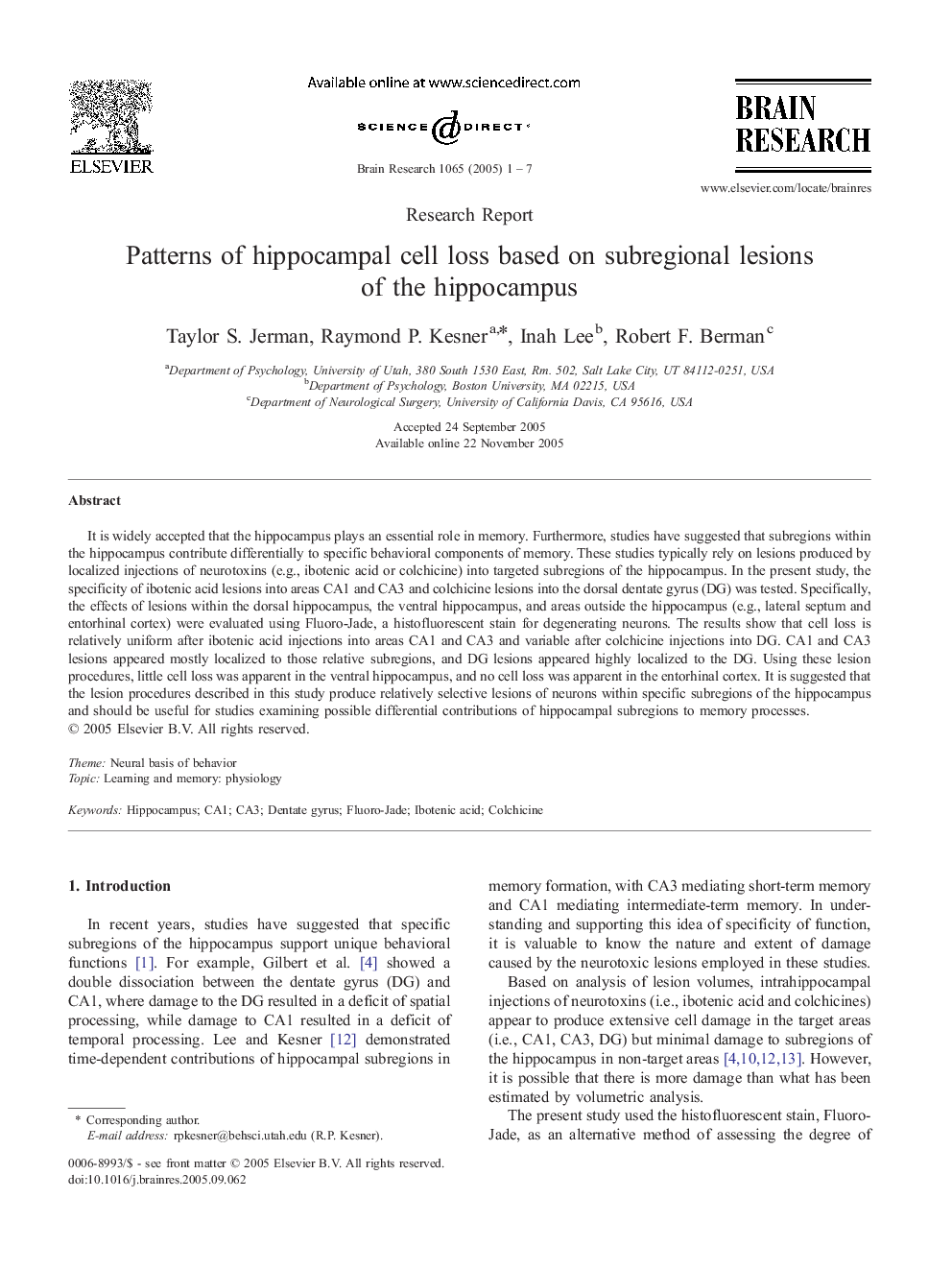| Article ID | Journal | Published Year | Pages | File Type |
|---|---|---|---|---|
| 9415691 | Brain Research | 2005 | 7 Pages |
Abstract
It is widely accepted that the hippocampus plays an essential role in memory. Furthermore, studies have suggested that subregions within the hippocampus contribute differentially to specific behavioral components of memory. These studies typically rely on lesions produced by localized injections of neurotoxins (e.g., ibotenic acid or colchicine) into targeted subregions of the hippocampus. In the present study, the specificity of ibotenic acid lesions into areas CA1 and CA3 and colchicine lesions into the dorsal dentate gyrus (DG) was tested. Specifically, the effects of lesions within the dorsal hippocampus, the ventral hippocampus, and areas outside the hippocampus (e.g., lateral septum and entorhinal cortex) were evaluated using Fluoro-Jade, a histofluorescent stain for degenerating neurons. The results show that cell loss is relatively uniform after ibotenic acid injections into areas CA1 and CA3 and variable after colchicine injections into DG. CA1 and CA3 lesions appeared mostly localized to those relative subregions, and DG lesions appeared highly localized to the DG. Using these lesion procedures, little cell loss was apparent in the ventral hippocampus, and no cell loss was apparent in the entorhinal cortex. It is suggested that the lesion procedures described in this study produce relatively selective lesions of neurons within specific subregions of the hippocampus and should be useful for studies examining possible differential contributions of hippocampal subregions to memory processes.
Keywords
Related Topics
Life Sciences
Neuroscience
Neuroscience (General)
Authors
Taylor S. Jerman, Raymond P. Kesner, Inah Lee, Robert F. Berman,
